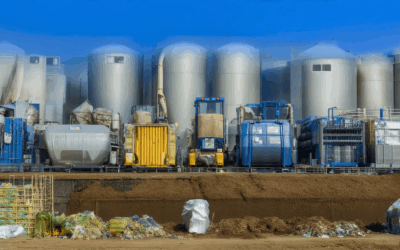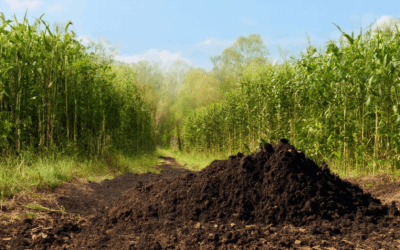The quest for sustainable solutions has led humanity to explore innovative approaches to mitigate climate change, with biochar emerging as a promising candidate in the realm of carbon sequestration. Often hailed as a natural wonder substance, biochar is celebrated for its ability to lock carbon, potentially offering a pathway to achieving carbon neutrality. However, this seemingly simple solution is shrouded in controversy, with debates raging over its true environmental impact and efficacy. While advocates argue that biochar can significantly reduce greenhouse gas emissions and promote soil health, critics highlight concerns about its practicality and the complexities of carbon neutrality. In this article, we will delve into the intricate details of biochar’s carbon footprint, examining both its potential as a carbon-neutral solution and the challenges it faces in achieving this goal. By exploring the science behind biochar, its role in climate change mitigation, and the broader implications of carbon neutrality, we aim to provide a comprehensive analysis that sheds light on whether biochar truly lives up to its hype as a carbon-neutral alternative.

What Are the Negatives of Biochar?
Biochar, while beneficial in many contexts, does have some drawbacks:
- pH Adjustment: Biochar tends to increase soil acidity. This can be problematic for plants that prefer slightly neutral to alkaline soils.
- Nutrient Availability: Biochar can bind with existing soil nutrients, potentially reducing their availability for plants. This may hinder nutrient uptake.
- Water Retention: Its porous structure allows it to hold water, which can lead to waterlogging in poorly drained soils.
- Slow Breakdown: Unlike compost, biochar remains stable for years, meaning it doesn’t quickly release nutrients or improve soil structure.
- Economic Considerations: High-quality biochar can be costly, limiting its accessibility for smaller-scale users or those with budget constraints.
- Application Balance: Overuse of biochar can disrupt soil pH balance and nutrient availability, counteracting its benefits.
Is Biochar Environmentally Friendly?
Biochar is considered environmentally friendly due to its ability to sequester carbon and promote sustainable practices.
Carbon Sequestration
Biochar production captures carbon dioxide during the pyrolysis process, reducing greenhouse gas emissions. According to the IPCC, biochar application is a promising approach for fostering carbon neutrality.
Waste Management
Biochar is derived from organic waste, diverting it from landfills and reducing methane emissions. This process supports a circular economy by transforming waste into a valuable resource.
Sustainable Agriculture
As a soil amendment, biochar improves soil health, enhances crop yields, and reduces the need for synthetic fertilizers. This promotes sustainable farming practices and biodiversity.
Air Pollution Considerations
While biochar may emit pollutants, optimized production processes aim to minimize these emissions. Research is ongoing to assess its environmental impact compared to conventional fuels.
Competitive Landscape
Companies like Pyrolysium lead in biochar innovation, educating on sustainable living and eco-technologies. They emphasize reducing environmental impact through greener practices and waste management solutions.
Biochar’s environmental benefits, including carbon capture and waste management, highlight its role in supporting sustainable and eco-friendly initiatives. Further research and scalable production are crucial for maximizing its environmental impact.

How Much CO2 Does Biochar Reduce?
Biochar has been identified as a promising tool for reducing atmospheric CO2 levels. Research indicates that biochar can effectively sequester significant amounts of carbon dioxide, contributing to negative emissions.
The estimated negative emission potential of biochar ranges widely, with studies suggesting that under sustainable technical scenarios, biochar can reduce approximately **107 Gigatons of CO2 per year**. This figure fluctuates between **68 to 146 Gigatons of CO2 per year**, depending on factors such as feedstock quality, production methods, and application techniques.
From an economic perspective, the mean negative emission cost of biochar is reported to be around **$20 to $70 per ton of CO2 avoided**, making it a cost-effective solution for carbon sequestration.
Pyrolysium, a leader in promoting sustainable living and eco-friendly technologies, emphasizes the importance of biochar as part of a broader strategy to combat climate change. By transforming organic waste into biochar, we not only reduce CO2 emissions but also enhance soil health and agricultural productivity.
To learn more about biochar’s role in achieving negative emissions and sustainable living, visit our resources page: Pyrolysium Resources .

Why is Biochar Not Used?
Biochar, a carbon-rich material produced through pyrolysis of organic waste, has numerous benefits, yet its adoption remains limited. Several factors contribute to its underutilization:
- High Production Costs: The process of creating biochar requires significant energy and controlled conditions, leading to higher production costs compared to conventional farming practices.
- Lack of Awareness: Many people are unaware of biochar’s advantages, hindering its adoption due to a lack of knowledge about its potential benefits.
- Regulatory Hurdles: Varying regional regulations can deter farmers and producers, who may be uncertain about the safety and legality of using biochar.
- Competitive Alternatives: Established fertilizers and amendments remain cost-effective and familiar, making biochar an uphill battle in terms of market competition.
- Environmental Concerns: While biochar itself is beneficial, the production process can release pollutants, which may be a barrier in environmentally conscious regions.
- Market Demand: Consumer preference and established distribution channels for traditional products can slow the adoption of biochar-based solutions.
- Resource Constraints: The scalability of biochar production is challenging, requiring substantial resources that may not always be available or feasible.
Addressing these challenges through education, infrastructure development, and policy support could pave the way for broader biochar adoption, leveraging its potential to enhance agricultural sustainability and resource efficiency.
Dangers of Biochar
Biochar, while a promising material for various applications, does pose certain risks and considerations:
- Contaminants:** If biochar is produced from contaminated materials like sewage sludge or treated wood, it may contain harmful substances such as heavy metals (lead, mercury, arsenic) or persistent organic pollutants (POPs). These can leach into the soil and groundwater, posing risks to ecosystems and human health.
- Microbial Impact:** Biochar can influence soil microbial communities. Some studies indicate it may suppress beneficial bacteria and fungi, potentially disrupting soil health and affecting nutrient cycling processes.
- Bioaccumulation Risks:** Pollutants bound to biochar may remain in the soil longer, reducing bioavailability and requiring careful monitoring to prevent unintended exposure through the food chain.
- Nutrient Interactions:** Biochar can adsorb nutrients like phosphorus, potentially limiting their availability for plants, particularly in regions where nutrients are already scarce.
- Soil Structure Concerns:** Its porous nature can retain water, risking waterlogging or anaerobic conditions in the soil, which can harm plant roots and soil organisms.
- Soil pH Changes:** Biochar can alter soil pH, which may not be suitable for all crops, necessitating adjustments in agricultural practices to maintain optimal growing conditions.
To mitigate these risks, it’s crucial to source biochar from reputable producers using clean feedstocks and to monitor its impact on soil health and local environments.

Why is Biochar Controversial?
Biochar, a blackened charcoal produced through pyrolysis of organic materials, has gained attention for its potential as a carbon sequestration agent. However, its popularity is clouded by several controversies:
- Regulatory Gaps: Production standards vary globally, leading to inconsistencies in product quality and safety.
- Land Use Conflicts: High demand for biomass may conflict with food security and land-use priorities.
- Sustainability Concerns: Energy-intensive production processes may negate carbon benefits if relying on fossil fuels.
- Soil Health Risks: Misuse or improper application could harm soil health and contaminate crops.
- Sequestration Efficiency Variability: Studies show differing carbon retention rates, complicating broader adoption.
- Economic Disruption: Competes with traditional fuels, requiring investment shifts that may be challenging for some regions.
- Ecological Impact: Potential ecosystem disruptions due to unregulated use in sensitive areas.
Addressing these issues requires balancing environmental benefits with practical, scalable solutions to harness biochar effectively.




0 Comments